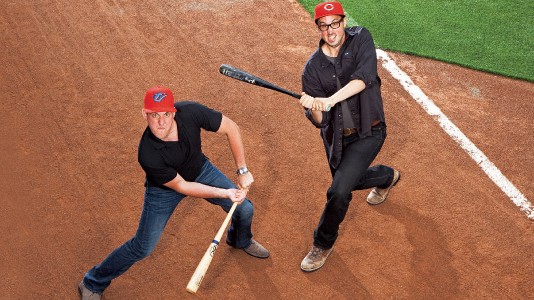From behind home plate, Jason Klein and Casey White look proudly at the Reading Phillies’ flamethrower Phillippe Aumont.
It’s not his high-priced arm they’re admiring, it’s what he’s wearing. “They’re the only team with pink on their uniforms,” White says.
Bloomberg Businessweek reports that Klein and White, who are each 30 years old, are the owners of Plan B. Branding, an upstart consulting company that has helped more than 30 minor league teams, including the Double-A Reading Phillies, rebrand themselves, creating new uniforms, logos, and in some cases even names.
It’s a thriving business, largely because minor league teams, unlike some in the majors, haven’t suffered much in the recession. Attending a Reading Phillies game costs about as much as seeing a movie. “I won’t say we’re recession-proof, but we’re recession-resistant,” says Minor League Baseball President Pat O’Conner.
Merchandise sales account for about $50 million of MiLB’s $750 million in annual revenue, but the true value is higher. “The merchandise drives awareness, which translates into ticket sales,” says Ken Schnacke, president of the Columbus Clippers and chair of MiLB’s licensing committee.
On average, 13 of MiLB’s 160 teams rebrand themselves each year. Often it happens because a team moves, gets a new stadium or a new owner, or becomes affiliated with a different major league team. It also happens because a new look drives sales.
Perhaps the main reason you see more cosmetic changes in the minors is because the owners and their staff are, in essence, theatrical producers–and costumes are a big part of the show. “We don’t control a single thing that happens on the field, not the players that are sent to us or the coaches,” says Reading Phillies General Manager Scott Hunsicker. “What we control is what happens off the field and making it a great experience for the fans.”
Photo by Bloomberg Businessweek.
